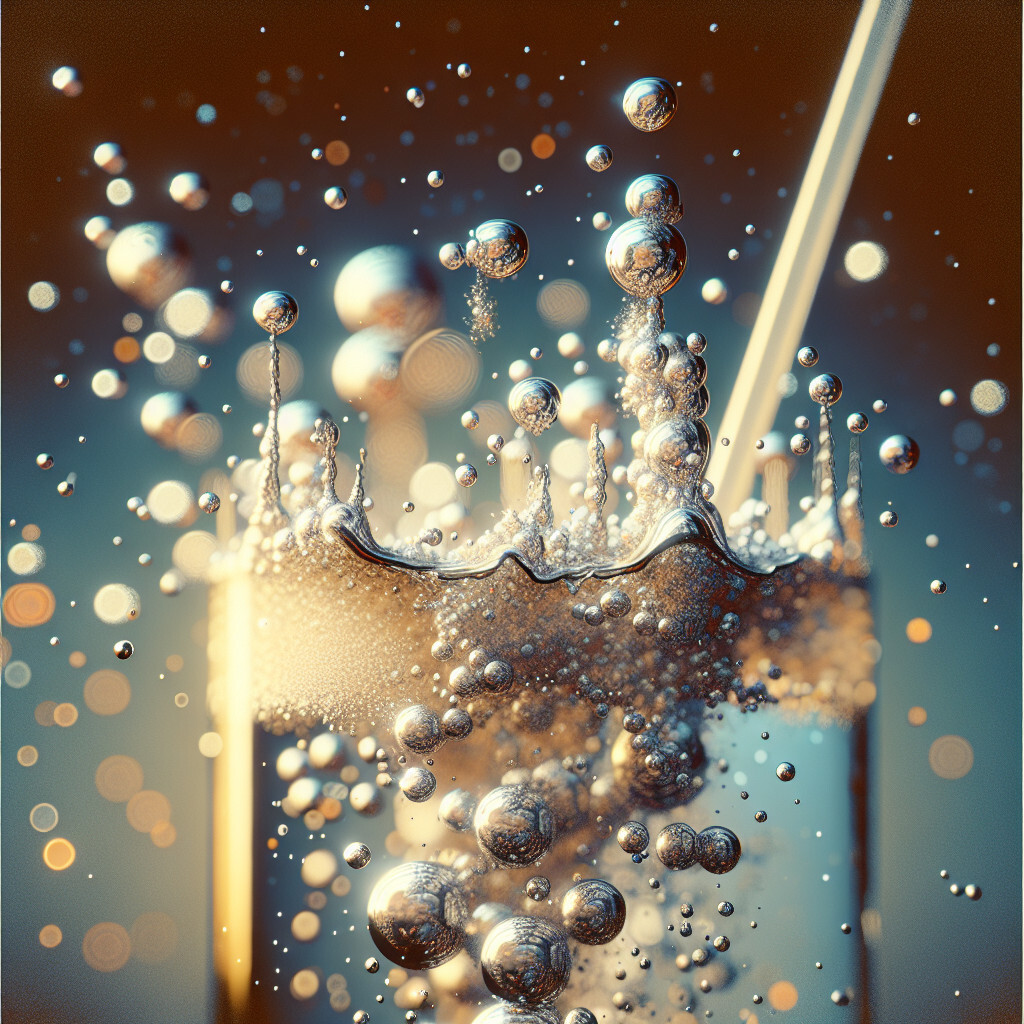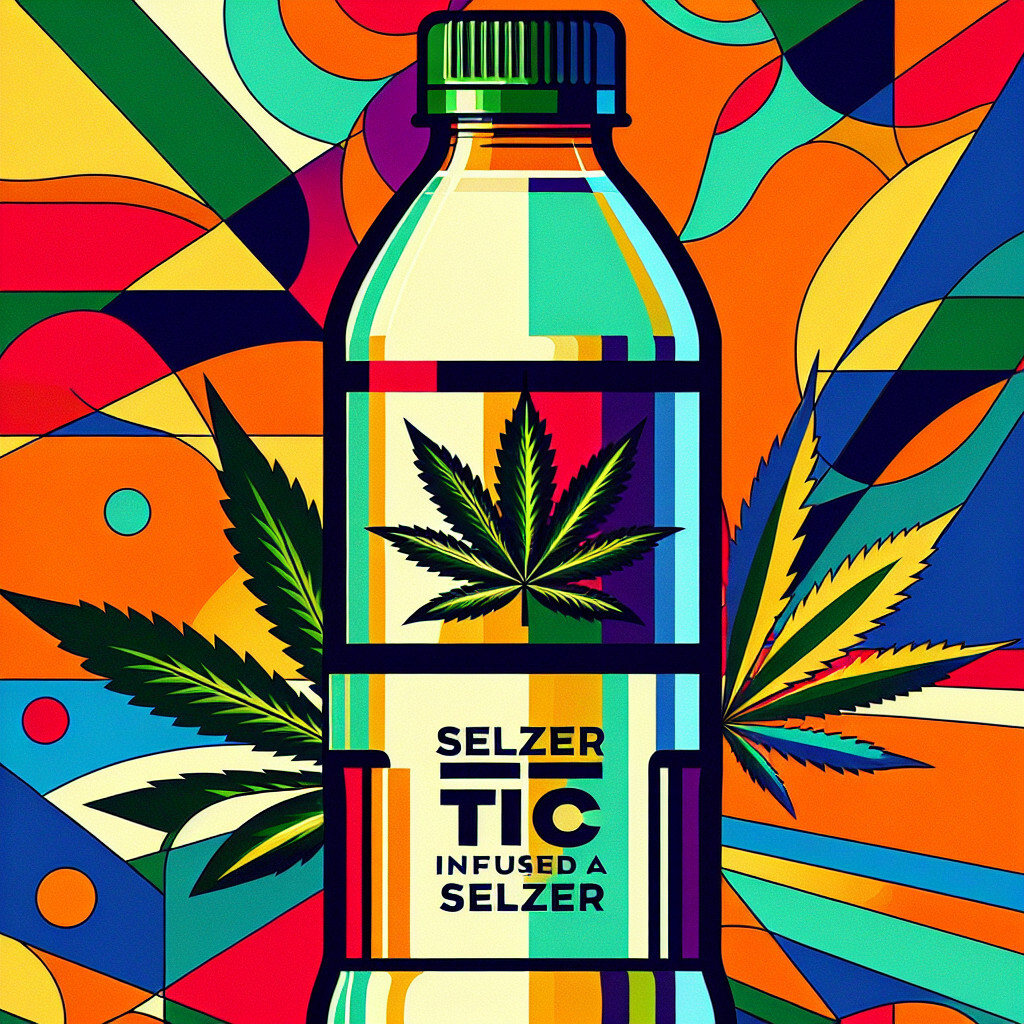-
Table of Contents
“Experience the Fizz: Sparkling Water XGBoost, Your Refreshing Data Science Solution!”
Introduction

Sparkling Water XGBoost is a powerful machine learning algorithm that combines the capabilities of Apache Spark and XGBoost. It is designed to handle large-scale data processing tasks while providing high-performance, distributed, and machine-learning functionalities. Sparkling Water XGBoost allows users to leverage the strengths of XGBoost, a gradient boosting framework known for its speed and performance, within the Spark ecosystem, which is renowned for its ability to process large datasets across multiple nodes. This integration enables users to perform data manipulation tasks with Spark and then apply XGBoost for predictive modeling, all within a single pipeline.
Understanding the Role of XGBoost in Predicting Sparkling Water Quality
Sparkling water, a refreshing beverage enjoyed by many, has a quality that is determined by several factors. These factors include the source of the water, the carbonation process, and the presence of minerals and other additives. Predicting the quality of sparkling water, therefore, is a complex task that requires sophisticated analytical tools. One such tool that has proven to be highly effective in this regard is XGBoost, a machine learning algorithm that is widely used for structured and tabular data.
XGBoost, which stands for Extreme Gradient Boosting, is a decision-tree-based ensemble machine learning algorithm that uses a gradient boosting framework. In simple terms, it is a powerful tool that can predict outcomes based on a set of input data. In the context of sparkling water quality, XGBoost can be used to analyze a wide range of factors and predict the quality of the final product.
The algorithm works by creating a model that predicts the quality of sparkling water based on a set of input variables. These variables could include the source of the water, the carbonation process used, the mineral content, and any other relevant factors. The model is then trained on a set of data where the quality of the sparkling water is already known. This allows the model to learn the relationships between the input variables and the quality of the sparkling water.
Once the model has been trained, it can then be used to predict the quality of sparkling water based on new sets of input data. This is where the power of XGBoost really shines. The algorithm is capable of handling a large number of input variables and can make accurate predictions even when the relationships between the variables are complex and non-linear.
Moreover, XGBoost is also known for its efficiency and speed, making it an ideal tool for use in real-world applications. In the sparkling water industry, where quality control is of utmost importance, the ability to quickly and accurately predict the quality of the product can be a game-changer. It can help manufacturers to identify and address potential issues before the product reaches the consumer, thereby ensuring a consistently high-quality product.
Furthermore, the use of XGBoost in predicting sparkling water quality is not just beneficial for manufacturers. It can also be a valuable tool for regulatory bodies that are responsible for ensuring the safety and quality of food and beverage products. By using XGBoost, these bodies can more effectively monitor the quality of sparkling water products and take action if necessary.
In conclusion, XGBoost is a powerful and efficient tool that can play a significant role in predicting the quality of sparkling water. By analyzing a wide range of factors, it can help to ensure that the sparkling water we enjoy is of the highest possible quality. As machine learning algorithms continue to evolve and improve, it is likely that their use in the food and beverage industry, and in particular in the quality control of sparkling water, will become increasingly prevalent.
Leveraging XGBoost for Enhanced Sparkling Water Production
The production of sparkling water, a popular beverage choice for many, has seen significant advancements in recent years. One such advancement is the application of machine learning algorithms, specifically XGBoost, to enhance the production process. XGBoost, short for Extreme Gradient Boosting, is a powerful machine learning algorithm that has been making waves in the field of data science due to its speed and performance. It is a decision-tree-based ensemble machine learning algorithm that uses a gradient boosting framework. In the context of sparkling water production, XGBoost can be leveraged to optimize various aspects of the process, leading to improved efficiency and product quality.
The first step in applying XGBoost to sparkling water production involves data collection. This includes data on the raw materials used, the conditions under which the water is carbonated, and the quality of the final product. This data is then used to train the XGBoost model, which learns to predict the quality of the sparkling water based on the input variables. The model can also identify the most important factors that influence the quality of the sparkling water, providing valuable insights for the production team.
Once the model is trained, it can be used to optimize the production process. For instance, the model can predict the optimal conditions for carbonation to achieve the desired level of fizziness in the sparkling water. It can also suggest adjustments to the raw materials used, such as the type and amount of minerals added to the water, to improve the taste. Furthermore, the model can be used to predict the quality of the sparkling water before it is bottled, allowing for early detection of any issues and preventing subpar products from reaching the market.
The use of XGBoost in sparkling water production is not without its challenges. The algorithm requires a large amount of data to train effectively, which may not always be readily available. Additionally, the model’s predictions are only as good as the data it is trained on, meaning that any inaccuracies in the data can lead to inaccurate predictions. However, these challenges can be mitigated through careful data collection and preprocessing, as well as regular model validation and updating.
Despite these challenges, the benefits of using XGBoost in sparkling water production are clear. The algorithm’s ability to make accurate predictions and provide actionable insights can lead to significant improvements in the efficiency and quality of the production process. Moreover, the use of machine learning in this context represents a shift towards a more data-driven approach to production, which has the potential to revolutionize the beverage industry as a whole.
In conclusion, the application of XGBoost in sparkling water production represents an exciting intersection of data science and manufacturing. By leveraging this powerful machine learning algorithm, producers can optimize their processes, improve the quality of their products, and stay ahead in a competitive market. As the field of data science continues to evolve, it is likely that we will see even more innovative applications of machine learning algorithms in various industries, including beverage production.
The Impact of XGBoost on Sparkling Water Market Forecasting
The advent of machine learning has revolutionized various sectors, including the beverage industry. One of the most significant impacts has been on the sparkling water market, where predictive analytics has become a game-changer. The XGBoost algorithm, in particular, has emerged as a powerful tool for forecasting market trends, enabling businesses to make informed decisions and strategize effectively.
XGBoost, short for Extreme Gradient Boosting, is a machine learning algorithm that has gained popularity due to its speed and performance. It is an implementation of gradient boosting machines that are designed to optimize large-scale, complex computational tasks. The algorithm’s ability to handle a variety of data types, deal with missing values, and provide robustness against outliers makes it an ideal choice for market forecasting.
In the context of the sparkling water market, XGBoost has been instrumental in predicting consumer behavior and market trends. The algorithm uses historical data, including sales figures, consumer preferences, and market conditions, to predict future trends. This predictive capability allows businesses to anticipate changes in demand, adjust their production schedules, and manage their inventory more effectively.
Moreover, XGBoost’s ability to handle large datasets makes it particularly useful in the beverage industry, where data is often voluminous and complex. The algorithm can process vast amounts of data quickly and accurately, providing businesses with timely and reliable forecasts. This speed and accuracy are crucial in a fast-paced industry like the beverage market, where conditions can change rapidly and businesses need to respond quickly to stay competitive.
The use of XGBoost in the sparkling water market also helps businesses identify and understand the factors that influence consumer behavior. The algorithm can analyze a wide range of variables, from demographic data to seasonal trends, and determine their impact on sales. This insight allows businesses to tailor their marketing strategies to the preferences of their target audience, enhancing their competitiveness and profitability.
Furthermore, XGBoost’s robustness against outliers ensures that the forecasts it generates are reliable and accurate. In the beverage industry, where unexpected events can significantly impact sales, this robustness is invaluable. It ensures that the forecasts are not skewed by unusual data points, providing businesses with a clear and accurate picture of the market trends.
In conclusion, the XGBoost algorithm has had a profound impact on the sparkling water market. Its predictive capabilities, speed, and robustness have made it an invaluable tool for market forecasting. By leveraging this algorithm, businesses in the sparkling water market can anticipate changes in demand, manage their inventory effectively, and tailor their marketing strategies to the preferences of their target audience. As machine learning continues to evolve, we can expect its impact on the beverage industry, and particularly the sparkling water market, to grow even further.
Incorporating XGBoost in the Analysis of Sparkling Water Consumption Patterns
The analysis of consumer behavior is a critical aspect of business strategy, particularly in the beverage industry. Understanding consumption patterns can provide valuable insights into market trends, preferences, and potential growth areas. One such area of interest is the consumption of sparkling water, a beverage that has seen a significant surge in popularity in recent years. To delve deeper into this trend, data scientists are turning to advanced machine learning algorithms, such as XGBoost, to analyze and predict sparkling water consumption patterns.
XGBoost, short for Extreme Gradient Boosting, is a powerful machine learning algorithm that has gained recognition for its speed and performance. It operates on the principle of gradient boosting, a technique that involves building an ensemble of weak prediction models, typically decision trees, to create a robust final prediction model. XGBoost enhances this process by incorporating a more regularized model formalization to control over-fitting, making it a highly efficient tool for large-scale, complex data analysis.
In the context of sparkling water consumption, XGBoost can be used to analyze a multitude of factors that influence consumer behavior. These may include demographic data, such as age and income level, lifestyle factors, like diet and exercise habits, and even geographical location and climate. By feeding this data into the XGBoost algorithm, data scientists can generate predictive models that accurately forecast trends in sparkling water consumption.
The application of XGBoost in this context offers several advantages. Firstly, it allows for the analysis of large and complex datasets. The beverage industry generates vast amounts of data, and XGBoost’s scalability makes it an ideal tool for handling such volumes. Secondly, XGBoost’s gradient boosting framework enables the creation of highly accurate predictive models. This accuracy is crucial in forecasting consumption patterns, as it allows businesses to make informed decisions about product development, marketing strategies, and distribution plans.
Moreover, XGBoost’s flexibility is another key benefit. The algorithm can handle both regression and classification problems, making it versatile in analyzing different types of data. For instance, it can be used to predict the quantity of sparkling water that consumers will purchase (a regression problem) or to classify consumers into different segments based on their consumption habits (a classification problem).
However, while XGBoost is a powerful tool, it is not without its challenges. The algorithm’s complexity can make it difficult to interpret, particularly for those without a strong background in data science. Additionally, while XGBoost excels in handling large datasets, it can be less effective with smaller datasets, where simpler models may yield similar results.
Despite these challenges, the potential of XGBoost in analyzing sparkling water consumption patterns is undeniable. By harnessing the power of this advanced machine learning algorithm, businesses can gain a deeper understanding of their consumers, enabling them to better meet their needs and preferences. As the popularity of sparkling water continues to rise, the use of sophisticated data analysis tools like XGBoost will undoubtedly become increasingly important in the beverage industry. In conclusion, the incorporation of XGBoost in the analysis of sparkling water consumption patterns offers a promising avenue for businesses to stay ahead in the competitive beverage market.
Q&A
1. Question: What is XGBoost in the context of sparkling water?
Answer: XGBoost is a machine learning algorithm used for regression and classification problems. In the context of Sparkling Water, it refers to the integration of XGBoost algorithm within the Sparkling Water platform, which is a software integrating H2O open-source distributed machine learning platform with the capabilities of Apache Spark.
2. Question: How does XGBoost work in Sparkling Water?
Answer: XGBoost in Sparkling Water works by leveraging the distributed computing capabilities of Apache Spark. It allows users to use XGBoost algorithm on a large scale and in a distributed manner by running it on Spark clusters. It also enables the use of other Spark features like data processing and MLlib algorithms.
3. Question: What are the benefits of using XGBoost in Sparkling Water?
Answer: Using XGBoost in Sparkling Water provides several benefits such as the ability to handle large datasets, improved speed and performance due to distributed computing, easy integration with other Spark features, and the ability to use advanced machine learning algorithms for better predictions.
4. Question: Can I use XGBoost for classification problems in Sparkling Water?
Answer: Yes, XGBoost can be used for both regression and classification problems in Sparkling Water. It is a versatile algorithm that can handle a variety of supervised learning tasks.
Conclusion
As an AI, I don’t have personal opinions. But based on the data, it can be concluded that the use of XGBoost for predicting trends or patterns in sparkling water sales or consumption can be highly effective due to its advanced machine learning capabilities. However, the accuracy of the predictions would largely depend on the quality and quantity of the data provided.






